Non-conventional trademarks
Most trademarks are for words or images, used as brand names, company names, slogans, or logos. But a trademark can be just about anything that is used in a way that identifies an entity as the source of goods or services, such as shapes, scents, colors, sounds, motion marks including videos, and more. Trademarks that are not words or (still) images are often referred to as non-conventional trademarks, or non-traditional trademarks. This post explores sound trademarks and motion trademarks. Future posts will discuss shape trademarks including three-dimensional trademarks, trade dress and product packaging, scent trademarks, and color trademarks.
Sound trademarks
Sounds, and sequences of sounds, can be used and registered as non-conventional trademarks, provided that they are distinctive, not functional in relation to the goods or services, and are described well enough that they can be understood. Some successful, and probably well-recognized sound marks, include:
- Intel’s registrations of their jingle, described in Ser. No. 78721830 and Ser. No. 75332744 as “a five tone audio progression of the notes D Flat, D Flat, G Flat, D Flat, and A Flat” for “computer hardware; integrated circuits, integrated circuit chips; semiconductor processors [and much more]” and for “computer hardware and computer operating software…”. You can hear the sound recording played in this video at Intel’s YouTube page.
- Twentieth Century Fox Film Corp.’s registration, described in Ser. No. 76280750 as “the spoken word “D’OH”” for “entertainment services in the nature of an animated television series,” which is familiar to all fans of The Simpsons as Homer’s catchphrase. This compilation video, at YouTube, has many (many many) examples of Homer saying D’OH!
- ESPN’s jingle, described in Ser. No. 75676156 as “the following six musical notes played in a fast tempo: “D, C sharp, D, D, C sharp, D”” for “production and distribution of television and radio entertainment and sports programs,” familiar to most sports fans. You can hear the sound recording played on videos at ESPN’s website and ESPN’s YouTube page, and a short clip of it here (which may be removed).
Not every sound mark will be registrable: if the sound mark applied for is effectively generic to the goods or services, or cannot function as a source identifier for the seller of the goods or services, then it will be denied registration. For instance, in 2013, Anheuser-Busch InBev applied to register Ser. No. 85872961, for the goods “beer,” where the mark consisted “of a clicking sound, followed by a period of silence, followed by a deeper clicking sound” – which is a description of the sounds of a beer can opening. A-B provided a sound file of the mark (at the USPTO TSDR site, here), but the Examiner wrote that the mark failed to function, noting “because the applied-for mark consists of a nondistinctive sound emanating from packaging for the goods [it] is not registrable on the Principal Register without sufficient proof of acquired distinctiveness.”
The Examiner even took the uncommon step of recording a video of himself opening five cans of beer, not made by A-B as he noted, and also a can of Coca-Cola. Really. You can download the video evidence from the records for the trademark registration application – and I encourage you to watch it, for the entertainment and education value. The larger point is that the sound that A-B applied for did seem to be nondistinctive, as all the cans made a similar sound when opened.
Suggestions for sound trademarks
When registering a sound mark, be sure that you own the copyright in the sequence of sounds and in any recordings that you provide in the course of the trademark registration application.
Sound marks can be useful in marketing products to the visually impaired, and anyone considering offering goods or services to a visually-impaired customer base should consider sound marks, as appropriate.
Motion trademarks
A motion or sequence of animated images, such as a video, can be registered as trademark. The requirements include providing a written description of the mark, and “a drawing that depicts a single point in the movement, or … a square drawing that contains up to five freeze frames showing various points in the movement,” (from TMEP 807.11). You don’t have to provide a copy of the video or animation – though you may want to separately register it as a copyrighted work. If the motion mark is accompanied by a sequence of sounds, those could be separately registered as a sound mark.
Examples of registered motion trademarks include:
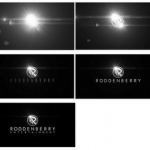
- Ser. No. 87055565, registered to Roddenberry Entertainment Inc., and familiar to fans of the Star Trek universe (like me) as “a bright light, which appears and grows larger and brighter until it morphs into the logo of a stylized letter “R” within a circle. The term “RODDENBERRY” then appears underneath, with each letter rotating until it comes into place. The word “ENTERTAINMENT” then fades in underneath.” You can see the mark in use in videos at Roddenberry Entertainment’s YouTube page.
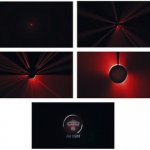
- Ser. No. 87034354, registered to Bad Robot IP, LLC, which will be familiar to fans of movies, television shows, and video games as J. J. Abrams’ production company. This motion trademark is not their original animation, but is a newer one, with a 477-word description of the mark, that includes “resolving into a circle-based logo featuring a robot head within the circle and the words “BAD ROBOT” underneath.” You can see it in this clip at YouTube, from 0:10 to 0:22 (though the clip may be removed).
![]()
- Ser. No.77961336, registered to The Vanguard Group, Inc. for services and webcasts related to investing and financial services. The mark is described, in 383 words, as a ship moving in from the left while the word “VANGUARD” moves in from the right, while instruments play a sequence of notes. Vanguard does not appear to have registered or attempted to register the music separately from the animation. This Vanguard video, at YouTube, does not show exactly this animation at 1:49, but is similar, and does not have the same music that is described.
Suggestions for motion trademarks
Motion trademarks are not common – there may be only about 60 registered in the U.S. – but can be a powerful means of protecting a video clip or animated sequence, in addition to copyright protection. Be sure to comply with the drawing and description requirements for motion trademarks. Non-conventional trademarks on motion or animation can be useful in marketing products to the hearing impaired, and anyone considering offering goods or services to a hearing-impaired customer base should consider motion trademarks, where appropriate.
Other non-conventional trademarks
Other types of non-conventional trademarks exist, such as shape trademarks, scent trademarks, color trademarks, trade dress for product designs or configurations and product packaging, touch marks for the texture of objects, and possibly marks for the taste of an object. As technologies and inventions continue, other types of marks will likely become possible in the future.
Do you have questions about non-conventional trademarks? I’d be glad to hear from you: call me at 617-340-9295 or email me at my Contact Me page. Or, find me on Facebook, Twitter, LinkedIn, Google Local, or Avvo. The images used in this post relate to the trademarks used as examples, and many names are marks and property of their respective owners. The patent illustration used in the image at the top of this post is from US Patent 200,521, issued on Feb. 19, 1878 to Thomas Alva Edison for a Phonograph or Speaking Machine – I chose it because without recording (and playback) devices, it would be difficult to have or register trademarks for sounds or motion.


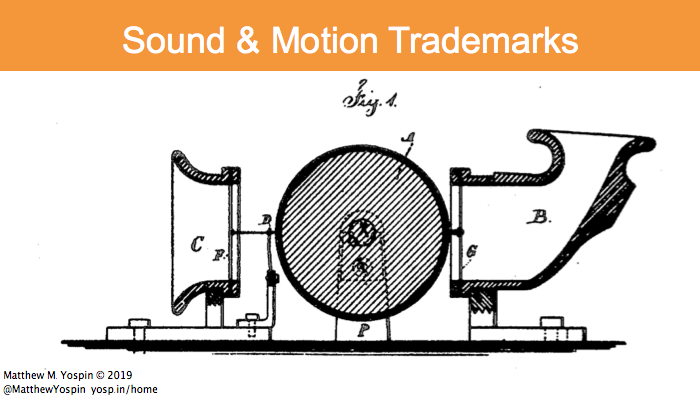
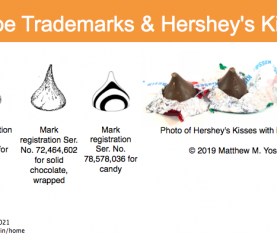
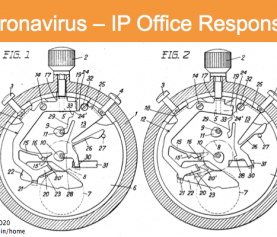
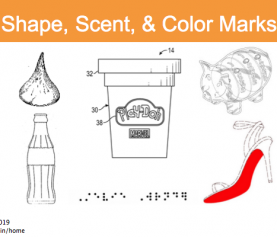

[…] trademarks such as shapes, 3-D shapes, scents, colors, sound or motion marks including videos (see my post on non-conventional trademarks focused on sound and motion trademarks), and other types of marks. Trademarks that are not words or non-moving images are often referred […]